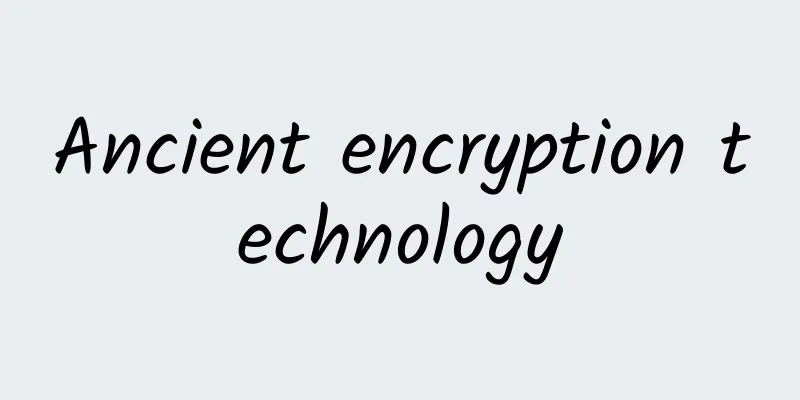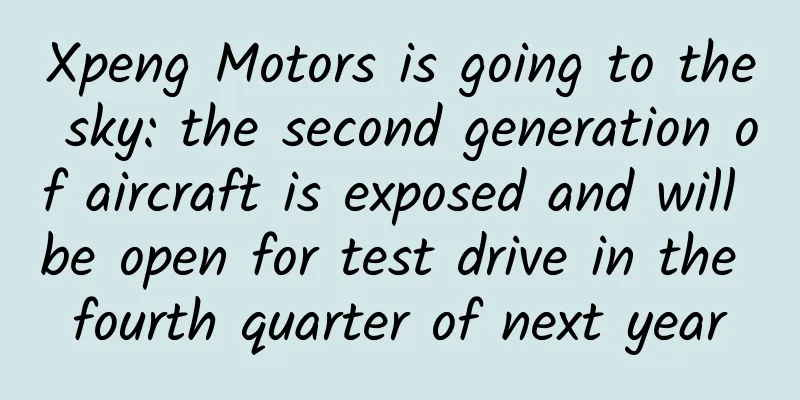Ancient encryption technology

|
See how we've hidden private information throughout history Caesar Cipher The first and most widely known encryption method is the Caesar cipher in 58 BC. encryption The encryption method of Caesar Cipher is that at the beginning of encryption and decryption, both parties need to determine a shift length. The encryption party shifts the words in the plaintext one by one according to the selected shift length to obtain the encrypted content; the decryption party shifts the ciphertext in the reverse direction according to the selected shift length to obtain the plaintext. For example, for the encryption condition, the plaintext is hello, and the encryption process with a translation length of 3 is:
Cracking There are two key points to cracking the Caesar cipher:
The reason why the Caesar cipher can be cracked in this way is that human language is actually a regular thing, and the frequency of each letter in the language is also part of this regularity (this is often overlooked). For the selected displacement, it is actually just a translation of the original letter frequency chart - because each letter is translated by a fixed length. Multi-word encryption In the middle of the 15th century, encryption methods advanced to polyalphabetic cipher. encryption The encryption method of multi-code encryption is that at the beginning of encryption, both the encryption and decryption parties must first determine a shift word. The encryption party must first convert the determined shift word into a corresponding set of numbers (called a code sequence) in advance, and then for a given plaintext, continuously shift it cyclically according to the length of the converted code sequence. The decryption party must also first convert the shift word into its corresponding code sequence, and then for a given ciphertext, continuously reverse shift the ciphertext letters cyclically according to the length of the converted code sequence. For example, for the encryption condition, the encryption process of the plain text is hello and the translation word is hi:
For the decryption party, he needs to know the translation word hi, of course, this is agreed upon in advance by both parties. The decryption method is not detailed, it is the reverse process of encryption. Cracking Compared to the cracking process of Caesar cipher - analyzing and statistically analyzing the chart of letter frequencies in the ciphertext, and then comparing it with the chart of letter frequencies in the language used in the plaintext, the translation amount can be obtained. Multi-letter code encryption increases the difficulty of obtaining the effective letter frequencies from the ciphertext. However, the principle of its decryption is still not complicated. For crackers, they are more concerned about the length of the word sequence used in multi-word encryption, such as the length of the word sequence 78 in the above example is 2. In addition, the reason why the concept of "loop" is emphasized in the explanation of the encryption process above is that when you understand the concept of "loop", you will find that in the above example, h, the first l, and o all use 7 as their translation amount, so the problem actually goes back to the Caesar cipher. Therefore, for crackers, they only need to keep guessing the length of the code, because the plaintext is cyclically shifted according to the length of the code sequence, and the beginning of one cycle and the beginning of the next cycle must use the same shift amount. As long as they follow this rule, they can pick out the encrypted letters separated by the length of a guessed code sequence for frequency analysis and statistics, and then compare them with the letter frequency of the plaintext to get the shift amount - back to the cracking process of the Caesar cipher. One-time password In the late 19th century, a fairly strong encryption method called one-time pad was developed. encryption The so-called one-time pad, the length of the encrypted code is no longer the fixed length mentioned above, it uses a random method to obtain a random code sequence with the same length as the plain text letters. The first thing to know is that for the English alphabet, there are only 26 possible translations for each letter. Because for any counting system with a fixed length (actually a modular system), a translation that exceeds its module will start from the beginning (complement), here you can imagine a clock with 26 hour scales, if the translation from 0 o'clock clockwise is 27, the actual result is 1 o'clock - there is no difference from directly translating 1 clockwise. Then, the one-time pad encryption process for the plaintext hello can be as follows:
So assuming the random code sequence is 35685, the corresponding ciphertext is kjrtt. Of course, the receiver needs to know both the random code sequence and the corresponding ciphertext each time. Cracking For the ciphertext obtained by one-time pad encryption, the cracker needs to face two problems:
Since there is no pattern to the ciphertext, the cracker can only try to get the plaintext by brute force. However, for the plaintext hello, its ciphertext will be one of 26*26*26*26*26 = 11881376 combinations, and this is only the case when there are only 5 letters. ***Confidentiality Understand this game: Eve invites Bob to a room, and Bob finds that there is nothing in the room except a deck of cards, several locks (locks with keys and combination locks), and an empty square. Eve asks Bob to choose a card and then hide it to the best of his ability. The rules are simple. Bob cannot take anything out of the room, all cards and keys must remain in the room, and at most one card can be placed in the empty square. Eve guarantees that he has not touched the locks. If Eve cannot find the card Bob has hidden, Bob wins. So what should Bob do? First, Bob chooses a 6 of diamonds and throws it into the empty box. Then he starts to think about which lock to use to lock the box. It seems that using a combination lock is a good choice, but Bob soon realizes a problem - the remaining cards on the table will reveal his choice. The lock is just a trap. He can't take the card out of the deck, so he puts the selected card back into the deck and reshuffles the deck to disrupt their original order. Now, the card Bob chooses can be any card in the deck, and he can leave the room with confidence. ***, Bob wins the game because the best Eve can do is guess the card he chose - Bob left no information about his choice. Even if Eve is given a computer with no performance limitations, she can only guess, which is what we call "*** confidentiality". On September 1, 1945, 29-year-old Claude Shannon published a confidentiality paper that proved for the first time from a mathematical perspective how and why "one-time pad" has perfect confidentiality. Claude Shannon thought about encryption schemes in the following way:
Now, with one-time pads, the only problem we face is how we share those long keys in advance. Pseudo-random number generator When we observe the natural world, we find random fluctuations everywhere. We can measure and generate true random numbers by taking a familiar fluctuation, such as noise. When we sample the noise, we get numbers. For example, by measuring the current of a TV over a period of time, we can generate a sequence of true random numbers. In order to visualize a sequence of numbers, we can draw the path of change for each number in the sequence, which is also called a random walk. According to the visualized image, at any point in a true random sequence, it is impossible to predict where the next point will appear. Random processes are supposed to be non-deterministic because they cannot be determined in advance. On the other hand, machines are deterministic, and their operations are predictable and repeatable. Since random numbers need to be obtained continuously and quickly, and the previous computers had limited storage capacity, it is not practical to directly store a random number of fixed length. Therefore, in early computers, scientists invented an algorithm to mechanically simulate the disorder phenomenon in randomness. This algorithm is called the Middle-square method. For example, to use this algorithm to generate a 4-digit pseudo-random number, you need to first select a 4-digit number as the starting value (seed) of the entire process, and after multiplying (squaring) this 4-digit number by itself, you will get an 8-digit number (if it is less than 8 digits, add 0 in front to make it 8 digits). After getting the 8-digit result, take out 4 digits as the result, or as the seed for the next operation, and repeat the above process to get more 4-digit pseudo-random numbers. The only guarantee of randomness for this method is the random seed that was chosen initially. The same seed will produce the same sequence. So what is the difference between a random sequence and a pseudo-random sequence? Pseudo-random sequences can be visualized by the random walk mentioned above. It turns out that if a seed is used before, the next result will repeat the previous intermediate result. The period before the pseudo-random sequence repeats is called the period. This period is strictly limited by the length of the seed that was chosen initially. For example, if we use a 2-digit seed, we can generate 100 2-digit combinations before the result sequence repeats. Once an intermediate result with the same 2-digit seed appears, the next intermediate result will repeat periodically. A 3-digit seed can generate 1,000 3-digit combinations. A 4-digit seed can generate 10,000 4-digit combinations. If we use a very long seed, we can generate a pseudo-random sequence of results with a very long period. Another problem we need to face is that once we choose a pseudo-random way to generate random numbers, we will lose many sequences that should appear in the true random sequence. For example, Alice needs to generate a true random combination of 20 characters for a plaintext of 20 characters, then the combination of these random characters has 26^20 possibilities. As a pseudo-random cracking method, we can keep guessing all possible seeds. This brings us to a common problem in computers, what is possible and what is possible within a certain period of time. When we buy a bicycle combination lock, the same logic is actually used. We know that everyone can try all possible combinations of numbers on the combination lock until they find the matching one and open the lock. However, this process will take them several days, so for a period of time within 8 hours, we can think that the lock is almost safe. Under the above pseudo-random generation method, the degree of confidentiality will increase with the length of the seed. If the most powerful computer takes hundreds of years to try out all the possibilities of the seed, we can think that this method is almost safe, but not absolutely confidential. With the continuous development of computers, the length of the seed also needs to continue to grow accordingly. Using the pseudo-random method mentioned above, Alice and Bob do not need to share a long code sequence in advance. They only need to share a corresponding random seed, and then use that seed to generate a seemingly random sequence as a code sequence. However, what will happen when they cannot share the random seed face to face? |
<<: App Store exposure data and acquisition methods
>>: Android Studio 1.4 Beta 4 released
Recommend
The "love flower" described by Jin Yong that "scratched the beauty's face" and caused Yang Guo great suffering...what are these flowers?
The camellia that "scratches the face of a b...
The future of wearable technology and its applications
Wearable technology has evolved rapidly over the ...
These 6 high-tech mobile phone apps will instantly improve the quality of your phone!
After using mobile phones for such a long time, I...
Traffic screening for Tencent advertising promotion!
This time, the editor will continue to share with...
2 pictures to help you understand Toutiao's recommendation system
The “predecessors” of recommendation systems In 2...
Lose weight, reduce carbon emissions, save money! This is a good thing that kills three birds with one stone, you definitely don’t know
Do you lack motivation to lose weight? What if lo...
OPPO N3 unboxing experience: exquisite rotating lens from inside to outside
Since N1, the rotating lens design has become OPP...
Aging doesn’t just show up on your face! If you have these 10 signs, you’re getting older…
This article was reviewed by Zhu Hongjian, Chief ...
Why are severe convective weather such as heavy rain, strong winds, and lightning more likely to occur in summer?
Dahe.com (Reporter Mo Shaohua) The weather is hot...
At a cost of $10 billion, a 40-year-old problem remains unsolved
As physicists face three decades of fruitless sea...
Why is the phone still not easy to use even though it has such a high performance score?
Is the performance of the mobile phone good? Just...
Take the initiative in your career: build your personal brand and let opportunities come to you
Course Catalog: 01 Make sure what you earn is wor...
Foreign media revealed the cause of Samsung Note7 explosion: manufacturing error, different battery sizes
According to the Wall Street Journal, the cause o...
Apple iOS 15 major update, system optimization is obvious, more intelligent
Compared with the Android system, Apple's IOS...
The latest news on pension adjustments for retirees in 2022: Has it been increased?
According to the results of my country's seve...







![[Case] After working in operations for so long, have you ever thought about what the value of operations is!](/upload/images/67cc4e1b2ffb8.webp)

